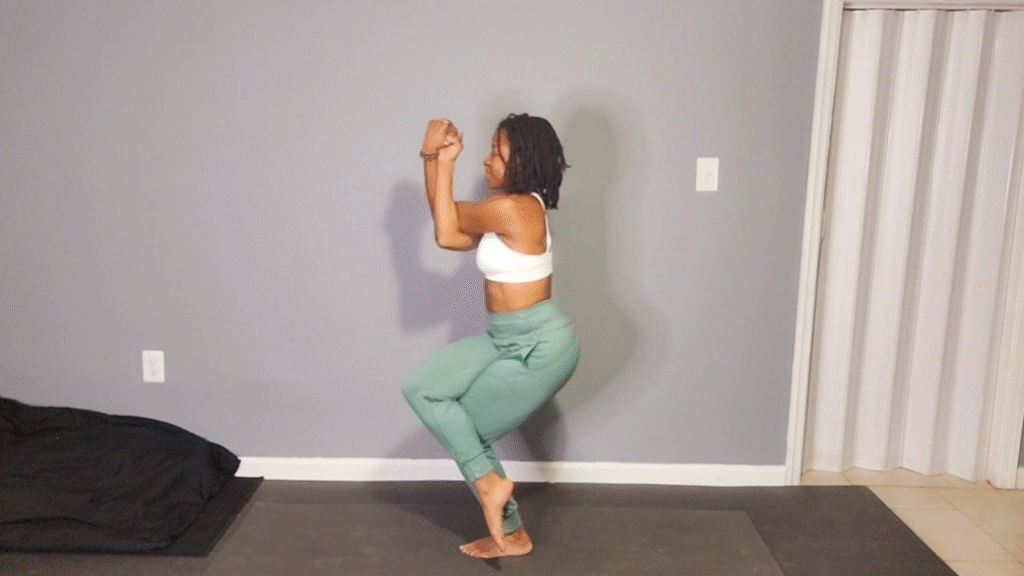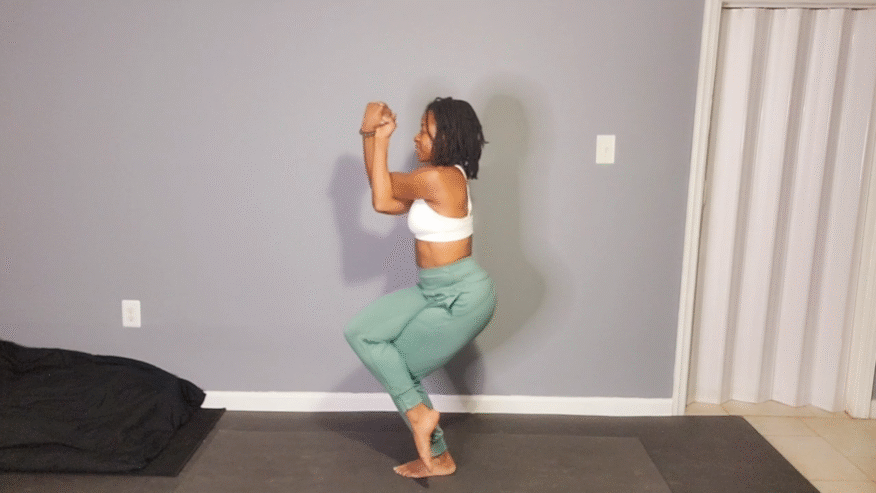
Eagle Pose, known as Garudasana in Sanskrit, is a standing balance pose often practiced in yoga. It offers a unique combination of strength, flexibility, and focus.
Steps to Perform Eagle Pose (Garudasana)
1. Begin in Mountain Pose (Tadasana): Stand tall with your feet hip-width apart, arms at your sides.
2. Shift Weight to One Foot: Shift your weight onto your right foot, firmly rooting it into the ground.
3. Cross the Opposite Leg: Lift your left leg and cross it over your right thigh. If possible, wrap your left foot behind your right calf.
4. Bend the Standing Knee: Slightly bend your right knee to maintain balance.
5. Cross the Arms: Extend both arms forward, parallel to the ground. Cross your right arm over the left at the elbows.
6. Wrap Forearms: Bend your elbows and bring your palms to touch each other, creating a spiral shape with the arms.
7. Find Your Drishti (Gaze): Focus on a point in front of you to maintain balance.
8. Hold the Pose: Stay in this position for 15-30 seconds. To release, gently unwind the legs and arms, returning to Mountain Pose.
9. Repeat on Opposite Side: Repeat the same steps, shifting weight onto your left foot and crossing the right leg over.
Benefits of Eagle Pose
– Improves Balance: Enhances coordination and stability by challenging your ability to maintain balance on one leg.
– Strengthens Muscles: Tones and strengthens ankles, calves, thighs, hips, shoulders, and upper back.
– Increases Flexibility: Opens up joints and increases flexibility in shoulders, hips, knees, and ankles.
– Enhances Focus: Encourages concentration and mindfulness through maintaining balance and drishti.
– Promotes Circulation: Improves blood flow by twisting limbs together, which can help detoxify the body.
– Reduces Stress: Calms the mind by requiring full attention and concentration, helping alleviate stress.
Here are some modifications:
1. Chair Support: Sit on the edge of a chair to perform the pose, keeping your spine straight. Cross one leg over the other, and bring your arms into the Eagle position. This reduces the strain on your knees and helps maintain balance.
2. Leg Modification: If wrapping one leg completely around the other is challenging, simply cross one leg over the other and place your foot on the ground or use a block for support.
3. Arm Modification: Instead of fully wrapping your arms, you can bring them together so that the backs of the hands touch or simply cross them at the elbows and place your hands on opposite shoulders.
4. Wall Support: Use a wall to support your back or to help with balance. Stand with your back against the wall as you move into the pose.
5. Partial Wrap: Wrap just one arm under the other without trying to interlace them completely, focusing instead on lifting the elbows and drawing the shoulders down.
These modifications allow you to enjoy the benefits of Eagle Pose while accommodating your individual needs and flexibility levels.
